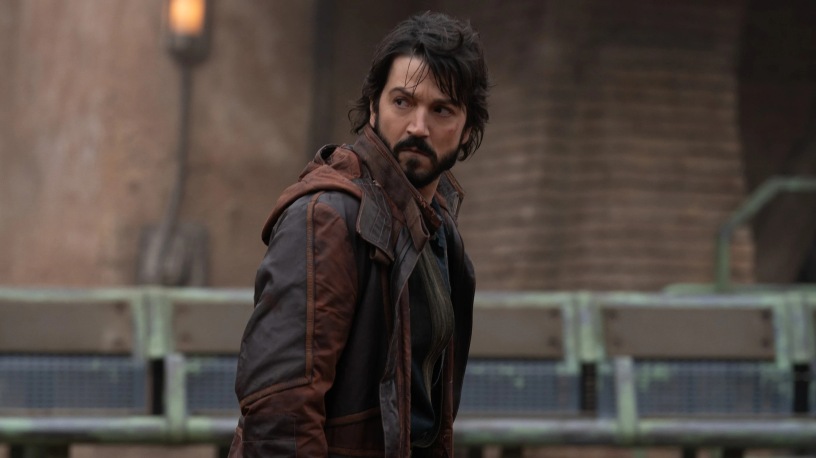The opening scene in the pilot of Andor sees our titular character walking into a seedy corporate planet Morlana-One. There, he enters a brothel looking for someone, but his mission ends up in a execution-style double murder of two corporate guards. Evoking vibes from Blade Runner, this immediately signals the show as a more mature and gritty take on the usual kid-friendly Star Wars, away from the black and white, good versus evil dichotomies. It might even be the first time we see a brothel in-universe.
Before Cassian Andor (Diego Luna) became the rebel martyr that he is in Rogue One, he’s merely a thief and a deadbeat trying to get by selling discarded or stolen materials from space cruisers. He does his trade in a dingy planet called Ferrix, a repair hub in a trade sector where parts are salvaged by scrap collectors as part of their daily grind. Bix Caleen (Adria Arjona), a local shop owner, helps him fence some of these scraps. Soon, Cassian becomes a wanted man as a result of his early trouble, and asks Bix for means to disappear for a while.
Andor dropped three episodes on its premiere, which is meant to be seen all together. Things don’t really kick off until the third episode, where things set-up in the previous two come together nicely. Treat it like an extended pilot, setting up a grounded world away from lightsabers and Force users. Seeing the main Star Wars films makes it easy to forget that there are other inhabitants in the galaxy just trying to survive their day-to-day, and couldn’t care less about overthrowing an oppressive regime. Andor provides a look into that aspect of the universe, specifically Cassian’s transformation from a cynical scrapper to a Rebel captain in just a few short years. As Luthen Rael (Stellan Skarsgard) says, “Don’t you wanna fight these bastards for real?” The antagonists, at least in these premiere episodes, are corporate guards that reflect real-world oppression driven by abuse of power and ego, instead of the sometimes cartoonishly evil Stormtroopers.
The decision by showrunner Tony Gilroy to minimize the reliance on the Volume video wall, which every Star Wars project has used to varying success, makes Andor visually superior. Using practical sets and shooting on location contribute to the overall gritty realism to its set pieces, removing the distracting plastic shine present in other shows. This is most prevalent in Obi-Wan Kenobi, where it’s obvious that a lot of the scenes are shot in a big dome. In Andor, most of the scenes take place in dilapitated homes, and dirty landfills inhabited by various aliens and humans. In just a few episodes, Gilroy has created a striking world that actually feels lived-in, with towns that has a sense of community. And it’s possible that we’re going to a whole lot more in the next ones.
Andor opens up a wealth of narrative possibilities by breaking away from franchise tropes. Although fans who have seen Rogue One may already know the fate of Cassian Andor, the show has five years before it gets there. It’s not afraid to take its sweet time in worldbuilding and establishing plot lines that could have big payoffs in the end. This deliberate pacing may turn off some fans, but with 12 episodes in one season, this different approach is what the franchise desperately needs.
